Fiat Tipo Wagon vs Renault Symbioz – Differences & prices compared
Compare performance, boot space, consumption and price in one view.
Find out now: which car is the better choice for you – Fiat Tipo Wagon or Renault Symbioz?
The Fiat Tipo Wagon (Estate) comes with a Petrol MHEV or Diesel engine and Automatic or Manuel transmission. In comparison, the Renault Symbioz (SUV) features a Petrol MHEV or Full Hybrid engine with Manuel or Automatic transmission.
When it comes to boot capacity, the Fiat Tipo Wagon offers 550 L, while the Renault Symbioz provides 576 L – depending on how much space you need. If you’re looking for more power, decide whether the 130 HP of the Fiat Tipo Wagon or the 158 HP of the Renault Symbioz suits your needs better.
In terms of consumption, the values are 4.70 L per 100 km for the Fiat Tipo Wagon, and 4.50 L for the Renault Symbioz.
Price-wise, the Fiat Tipo Wagon starts at 21000 £, while the Renault Symbioz is available from 24400 £. Compare all the details and find out which model fits your lifestyle best!
Fiat Tipo Wagon
The Fiat Tipo Station Wagon offers a spacious and practical solution for families seeking value without sacrificing comfort. Its sleek design and modern interior features create a pleasant driving experience, complemented by a range of user-friendly technology. On the road, the Tipo Estate provides a smooth drive, making it an ideal companion for both urban and longer journeys.
details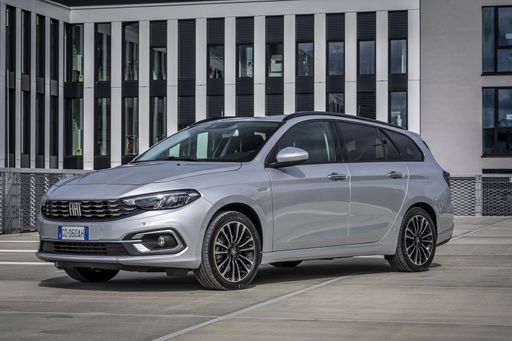 @ media.stellantis.com
@ media.stellantis.com
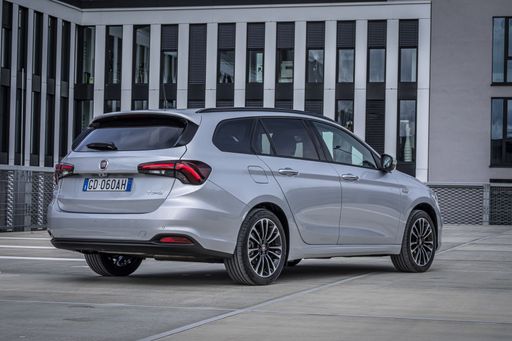 @ media.stellantis.com
@ media.stellantis.com
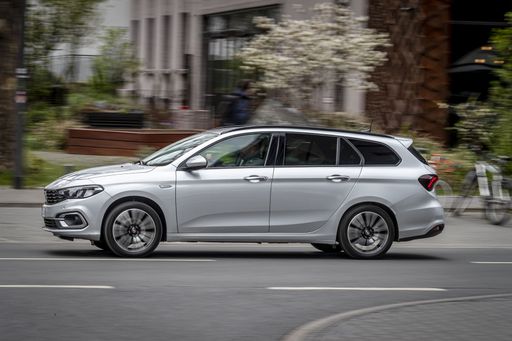 @ media.stellantis.com
@ media.stellantis.com
Renault Symbioz
The Renault Symbioz is an innovative concept car that explores the future of autonomous and connected driving. Its design seamlessly integrates indoor living space features with cutting-edge automotive technology, creating a comfortable and modern environment. The Symbioz highlights Renault's vision of an eco-friendly and connected mobility experience, paving the way for the next generation of smart vehicles.
details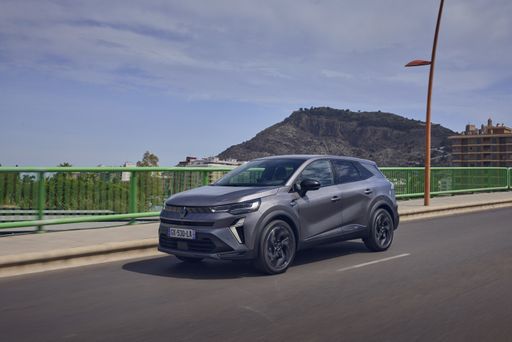 @ media.renault.at
@ media.renault.at
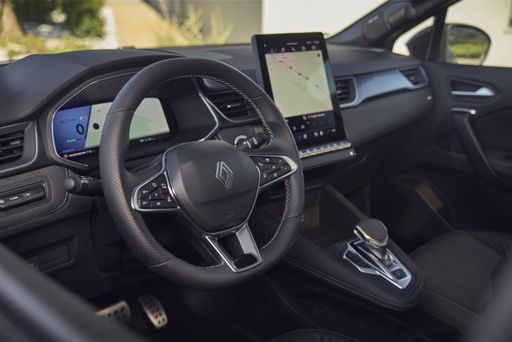 @ media.renault.at
@ media.renault.at
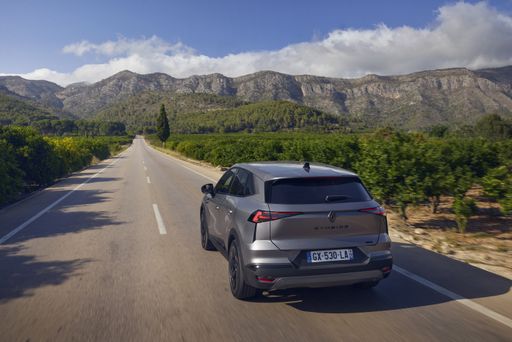 @ media.renault.at
@ media.renault.at

|

|
|
|
|
Costs and Consumption |
|
|---|---|
|
Price
21000 - 27000 £
|
Price
24400 - 30700 £
|
|
Consumption L/100km
4.7 - 5.4 L
|
Consumption L/100km
4.5 - 5.9 L
|
|
Consumption kWh/100km
-
|
Consumption kWh/100km
-
|
|
Electric Range
-
|
Electric Range
-
|
|
Battery Capacity
-
|
Battery Capacity
-
|
|
co2
122 - 125 g/km
|
co2
102 - 134 g/km
|
|
Fuel tank capacity
50 L
|
Fuel tank capacity
48 L
|
Dimensions and Body |
|
|---|---|
|
Body Type
Estate
|
Body Type
SUV
|
|
Seats
5
|
Seats
5
|
|
Doors
5
|
Doors
5
|
|
Curb weight
1455 - 1470 kg
|
Curb weight
1436 - 1544 kg
|
|
Trunk capacity
550 L
|
Trunk capacity
492 - 576 L
|
|
Length
4571 mm
|
Length
4413 mm
|
|
Width
1792 mm
|
Width
1797 mm
|
|
Height
1514 mm
|
Height
1575 mm
|
|
Payload
475 kg
|
Payload
376 - 379 kg
|
Engine and Performance |
|
|---|---|
|
Engine Type
Petrol MHEV, Diesel
|
Engine Type
Petrol MHEV, Full Hybrid
|
|
Transmission
Automatic, Manuel
|
Transmission
Manuel, Automatic
|
|
Transmission Detail
Dual-Clutch Automatic, Manual Gearbox
|
Transmission Detail
Manual Gearbox, Automatic Gearbox
|
|
Drive Type
Front-Wheel Drive
|
Drive Type
Front-Wheel Drive
|
|
Power HP
130 HP
|
Power HP
140 - 158 HP
|
|
Acceleration 0-100km/h
9.1 - 10.1 s
|
Acceleration 0-100km/h
9.1 - 11.2 s
|
|
Max Speed
206 - 207 km/h
|
Max Speed
180 km/h
|
|
Torque
240 - 320 Nm
|
Torque
250 - 265 Nm
|
|
Number of Cylinders
4
|
Number of Cylinders
4
|
|
Power kW
96 kW
|
Power kW
103 - 116 kW
|
|
Engine capacity
1469 - 1598 cm3
|
Engine capacity
1333 - 1789 cm3
|
General |
|
|---|---|
|
Model Year
2024
|
Model Year
2025
|
|
CO2 Efficiency Class
D
|
CO2 Efficiency Class
D, C
|
|
Brand
Fiat
|
Brand
Renault
|
Fiat Tipo Wagon
Introduction to the Fiat Tipo Station Wagon
The Fiat Tipo Station Wagon has long been a staple in the automotive world, celebrated for its practical design, spacious interior, and affordability. The 2024 model continues this tradition, offering impressive updates in technology and performance, making it a significant contender in the compact estate car market. Here, we take a closer look at what makes the Fiat Tipo Kombi a standout choice.
Engine and Performance
Under the bonnet, the Fiat Tipo Station Wagon showcases its versatility with a choice of powertrains. Its offerings include a 1.5 GSE Hybrid with a mild-hybrid system that enhances fuel efficiency and provides a responsive driving experience. This engine choice delivers 130 PS and achieves a commendable fuel consumption rate of 5.4 L/100km.
For diesel enthusiasts, the 1.6 MultiJet engine provides a robust performance with the same 130 PS but boasts an even lower fuel consumption of 4.7 L/100km. Both engine variants offer a front-wheel drive system which is complemented by either a dual-clutch automatic transmission or a traditional manual gearbox, ensuring a pleasurable driving experience tailored to individual preferences.
Advanced Technology and Innovations
The 2024 Fiat Tipo Station Wagon is equipped with a suite of modern technologies, enhancing both safety and convenience. The model features an advanced infotainment system that integrates seamlessly with smartphones, offering navigation, media, and communication tools via a sleek and intuitive touchscreen interface.
On the safety front, the Tipo Station Wagon is equipped with various driver assistance systems, including adaptive cruise control and lane-keeping assist, ensuring both comfort and security on the road. These innovations reflect Fiat's commitment to merging safety with cutting-edge technology.
Design and Comfort
From a design perspective, the Fiat Tipo Station Wagon maintains a sleek and modern aesthetic, characterised by clean lines and a distinctive front grille that conveys confidence. The vehicle's dimensions (4571 mm in length, 1792 mm in width, and 1514 mm in height) provide ample space for passengers and gear, while a generous boot offers 550 litres of cargo capacity.
Inside, the Tipo Station Wagon is designed with comfort in mind, accommodating five passengers comfortably. The interior cabin is spacious, with quality materials and ergonomic seating ensuring that long journeys are undertaken in comfort.
Efficiency and Environmental Considerations
Efficiency is at the core of the Fiat Tipo Station Wagons design, as evidenced by its low fuel consumption figures and CO2 emissions ranging between 122 and 125 g/km, securing a CO2 efficiency class of D. This makes the vehicle an environmentally conscious choice without sacrificing performance or convenience.
Conclusion
For those in search of a reliable, spacious, and technologically advanced vehicle, the Fiat Tipo Station Wagon stands out as an excellent option. Its combination of performance, efficiency, and modern technology, all wrapped in a stylish design, ensures that it remains a top choice for 2024 and beyond.
Renault Symbioz
Discover the Future: The Renault Symbioz
As we transition into a new era of automotive technology, the Renault Symbioz stands as a beacon of innovation and sustainability. Designed with the modern driver in mind, this SUV redefines what it means to integrate elegant design with cutting-edge technology. Delve into the details of this impressive vehicle and see what sets it apart from the competition.
Unveiling Its Power: Hybrid Engine and Performance
At the heart of the Renault Symbioz is a full hybrid powertrain that combines efficiency with performance. The 143 PS engine, delivering 105 kW, ensures a smooth and responsive driving experience. Coupled with a front-wheel-drive automatic transmission, the Symbioz offers remarkable fuel economy at just 4.8 L/100 km, making it a top contender in the eco-friendly vehicle market.
Innovation Meets Design: Aesthetics and Aerodynamics
With dimensions measuring 4413 mm in length, 1797 mm in width, and 1575 mm in height, the Symbioz presents a striking and sleek profile. The vehicle marries form and function perfectly, enhancing aerodynamics while maintaining a comfortable and spacious interior. Its lightweight build, with a gross weight of 1498 kg, complements its agile handling and stability on the road.
Interior Elegance and Technology
The Renault Symbioz is not only about performance but also about offering a refined driving experience. The interior is meticulously designed to provide comfort for up to five occupants, boasting a generous boot space of 492 litres. High-quality materials and advanced infotainment systems enhance the driving experience, incorporating state-of-the-art technology seamlessly.
Bridging Sustainability and Performance
With CO2 emissions of 109 g/km and a CO2 efficiency class of C, the Renault Symbioz aims to reduce environmental impact without compromising on performance. Its 1.6-litre engine, composed of three cylinders, delivers a perfect synergy of power and efficiency, showcasing Renault’s commitment to innovative, responsible motoring.
Optional Trims: Tailoring to Your Preferences
Available in three distinct trim levels—Esprit Alpine, Iconic, and Techno—the Symbioz allows customers to customise their driving experience further. Each comes equipped with multi-mode automatic transmission options that cater to various driving styles, ensuring a tailored approach to modern driving needs.
Price and Availability
The Renault Symbioz is competitively priced, ranging between €32,550 and €35,450, depending on the selected trim. With its advanced features and cutting-edge technology, this vehicle provides significant value in the current automotive market.
Conclusion: A Vision of Tomorrow, Today
The Renault Symbioz is not just an SUV; it represents a commitment to a sustainable and technologically advanced future. By marrying superior performance with eco-conscious engineering, Renault has set a new benchmark in the automotive industry. The Symbioz is poised to captivate drivers around the world, embodying a seamless blend of innovation, efficiency, and style.
Which drive types are available for the Fiat Tipo Wagon?
Available as Front-Wheel Drive.
The prices and data displayed are estimates based on German list prices and may vary by country. This information is not legally binding.
